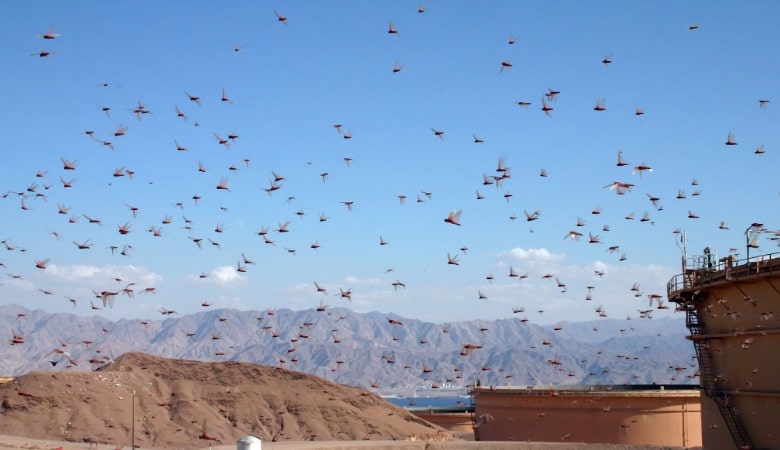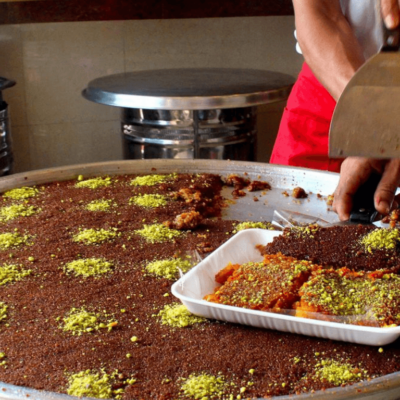As Tunisia shut down Al-Zaytouna TV, Al-Jazeera employs journalists and commentors of terror

As the world battles a new plague in the form of the novel coronavirus, another old one is shaping up to affect large swathes of North Africa, the Middle East and South Asia. As the growing season approaches in the countries of this region, crops are under threat from the swarms of locusts that have developed due to favourable climate in the past year.
Already billions of locusts have flown through this region earlier this year in the worst infestation seen in 25 years. While the damage has been minimal so far, the worst is not over yet according to the United Nations’ Food and Agriculture Organisation which has requested $138 million to control the situation and protect the livelihoods of millions of farmers. FAO chief Qu Dongyu has warned that, “More people are at risk of losing their livelihoods and worsening food security in the coming months.”
This is a crisis initiated by changing climate and favourable weather conditions. Unusually heavy rains, combined with warm weather have served to create the perfect breeding conditions for the desert locust, large swarms of which are forming over the Horn of Africa and the Arabian Peninsula and spreading to Iran, Iraq, Pakistan and India.
In the Arabian Peninsula, the infestation began in Yemen, and it soon moved into Saudi Arabia. In June last year, Yemen saw an outbreak of desert locust for the first time in three years, fueled by factors like the ongoing war. Swarms are in danger of forming when control efforts break down because of war, political collapse or natural disasters, meaning the prevention of breeding and other necessary interventions are not possible. And countries like Yemen, where a humanitarian crisis looms large, are in no position to enact appropriate pest control. In fact, Yemenis had to resort to turning the locusts into an alternative food source.
Iran last year had to use its military to help fight the locust invasion in the south of the country. It may have to do the same this year as swarms threaten to overwhelm up to one million hectares of land and destroy crops worth more the $7 billion.
The coronavirus pandemic is only exasperating the problem. The World Food Program warned that the world will also be facing a “hunger pandemic” due to locust swarms working on top of regional conflict and COVID-19, pushing an addition 130 million people to the brink of starvation before the year is over. The virus has also put a stop to travel of international experts and gatherings for training purposes.
Travelling up to 150 kms a day, a one square km swarm can eat the same amount of food in one day as 35,000 people. A current swarm developing in Kenya is three times the size of New York City and can grow 400 times by June if not treated.
If not urgently addressed, billions of locusts will blitz through large parts of the Arabian Peninsula, affecting agriculture and causing large-scale starvation.




